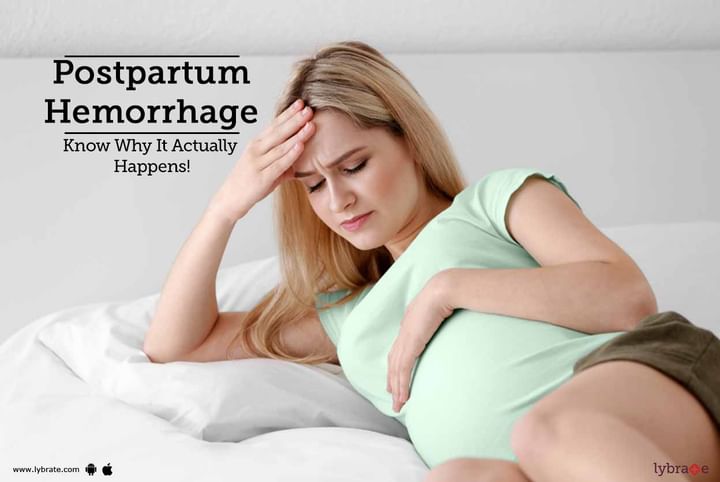Postpartum Hemorrhage - Know Why It Actually Happens!
Postpartum hemorrhage is a condition where a woman may lose a lot of blood (approximately 500ml to 1000ml) from her vulva shortly after childbirth. This usually occurs within the first 24 hrs of childbirth and can even result in severe blood loss threatening the mother’s life in case the blood loss is over 2000 ml. Secondary postpartum hemorrhage can also occur until 12 weeks after childbirth and this extra care should be taken, if there is any such possibility.
Symptoms of postpartum hemorrhage:
- Rapid increase in heart rate.
- Feeling dizzy while standing up.
- Increase breathing rate.
- Feeling cold and chilly even if the room temperature is normal.
- Sudden fall in blood pressure levels.
- Fainting or becoming unconscious.
Causes of postpartum hemorrhage:
- Uterine atony: This is a condition in which the uterus contracts and may lead to excessive bleeding. Infection in the placental tissue can also lead to postpartum hemorrhage.
- Trauma: This is a very common cause for postpartum hemorrhage. Sometimes, the uterus (womb), vagina, cervix (passage forming the lower end of the womb) and the perineum (area between the vulva and the anus) can get injured. These areas become vascular during the course of pregnancy and may rupture in the process of childbirth causing excessive bleeding.
- Tissue: At times, the whole placenta or fetus tissue does not come out of the body after childbirth. This can lead to profound blood loss resulting in postpartum hemorrhage.
- Thrombin: This is a disorder which occurs when there is excessive bleeding when the blood fails to clot inside the body.
How can you prevent postpartum haemorrage?
- Oxytocin is a substance which is used after the delivery of the baby. This prevents postpartum hemorrhage. It can be administered in the following ways :
- As an injection which is directly injected into the blood stream.
- After delivery, breastfeeding your baby can also trigger natural oxytocin. This occurs as encouraging the baby to suckle also stimulates the nipples which release oxytocin, thus preventing postpartum hemorrhage.
- In the form of intravenous drips mixed in with important medications. IV drips can administer oxytocin along with other important fluids along with it.
- Uterine massage is also recommended to prevent postpartum hemorrhage. After delivery, massaging the uterus makes the muscles relax and contract. This reduces the risks of excessive bleeding.
A lot of women can also die due to excessive bleeding after childbirth, especially in developing countries including India. This is a cause for concern and proper care should be taken if you start experiencing these symptoms.
In case you have a concern or query you can always consult an expert & get answers to your questions!



+1.svg)
